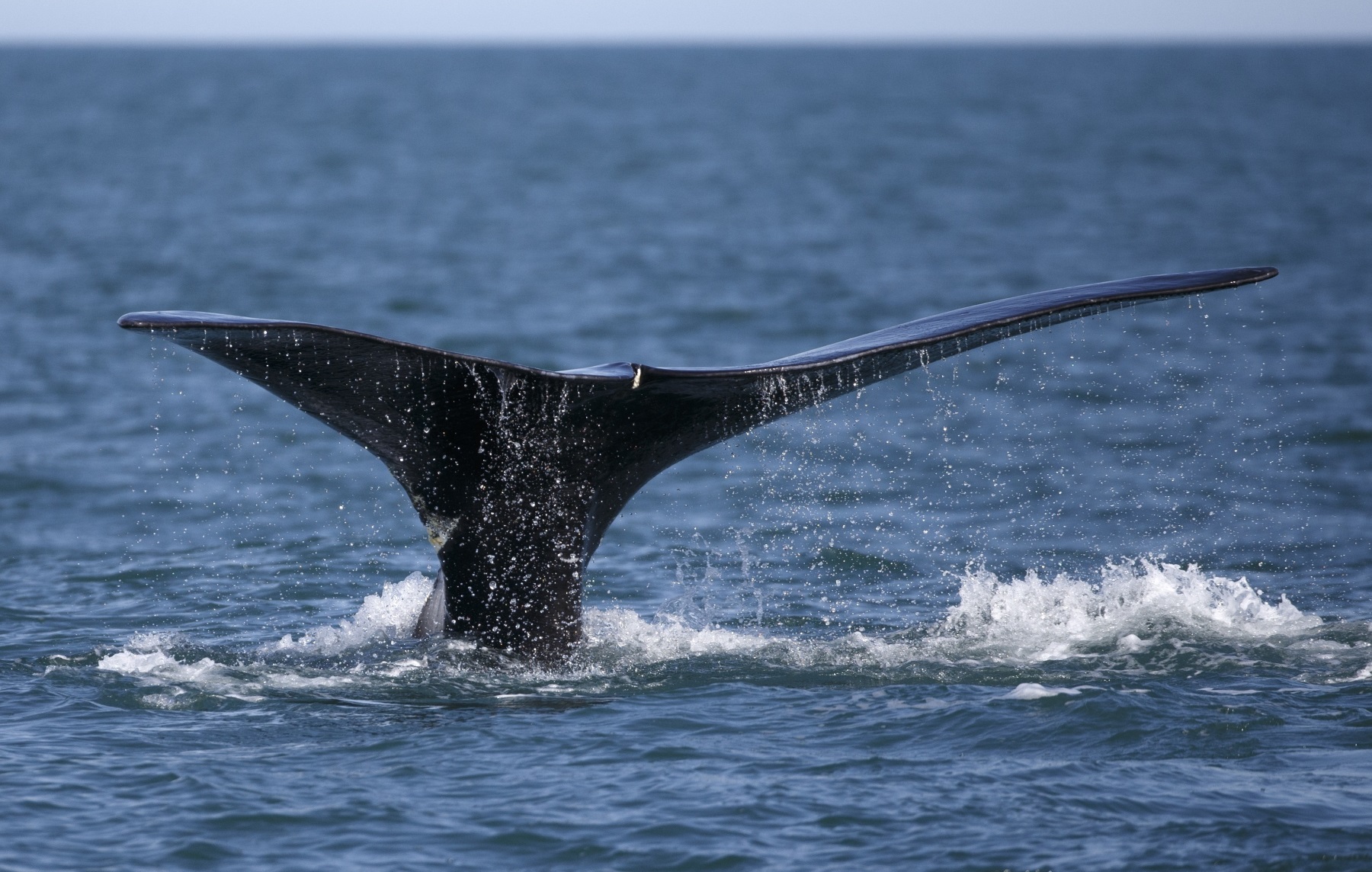First North Atlantic Right Whale Calf Seen Off Coast Of Florida This Season

A North Atlantic right whale is shown back in March off the coast of Plymouth, Massachusetts. Whale watchers are happy over the recent sighting of the first North Atlantic right whale calf of the season, spotted off the coast of Florida. It is the first calf seen in the species since 2017.
Michael Dwyer / Associated Press file
Whale watchers are excited about the first North Atlantic right whale calf of the season. The calf was spotted off the coast of Florida.
There are only about 400 right whales on the planet — and fewer than 100 breeding females.
Every winter, the whales migrate from New England and Canada to the coasts of Georgia and Florida to raise their young. They then return to the Northeast and Canada by March. This is the first calf seen in the species since 2017.
Back in the early 2000s, when the population was growing, it was common to see dozens of baby whales during calving season.
Clay George, a wildlife biologist with the Georgia Department of Natural Resources, says the endangered right whales have been dying at record rates, mostly in the Northeast and Canada, because of heavy, synthetic ropes in the water used as fishing gear.
Whales can get trapped in those ropes.
“Over 80 percent of every individual right whale has scars from having been entangled in this type of rope before.”
The sea mammals are also dying from collisions with ships.
George says one solution to the ship strikes is to slow ships down by ports.
“Studies have shown that if ships are slowed down to about 10 knots [about 11 mph], the whales should be able to get out of the way and survive potentially the collision.”
The aquatic animals normally live to about a century but nowadays live about 30 to 40 years. George says right whales only produce one calf at a time at best every three to four years.
“And so at least seeing a calf is hopefully the start of some good news to come,” he says. “Every single calf that’s born is important.”







